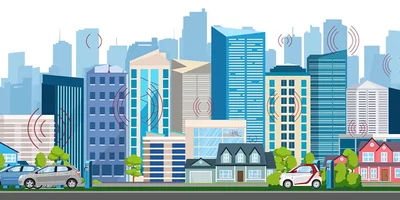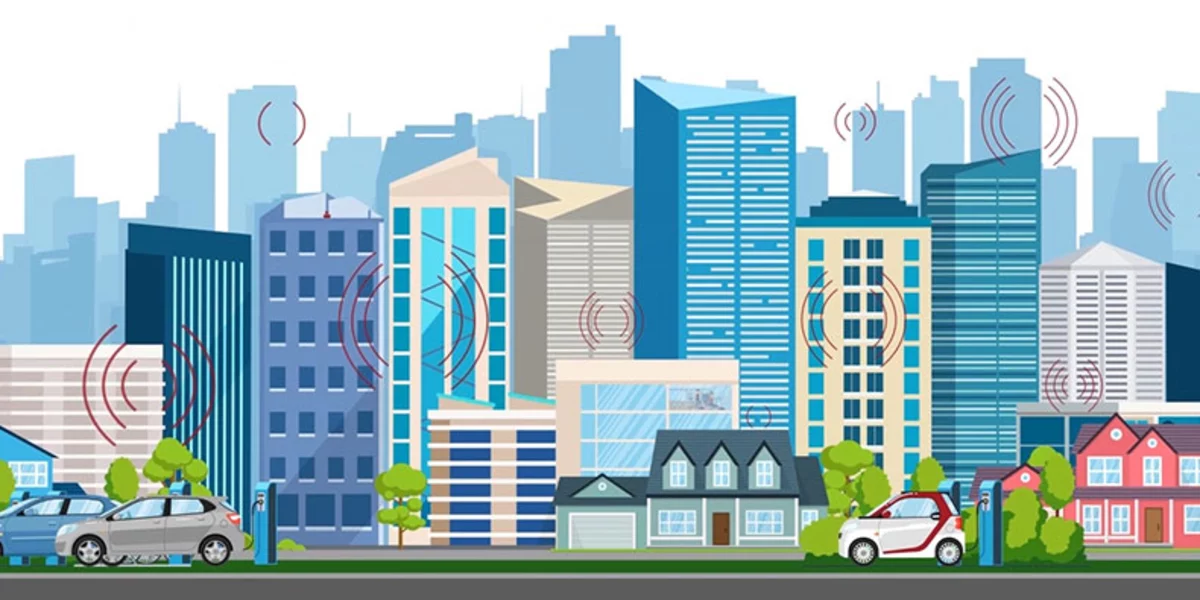Keys to the Smart City: New Directions in Authentication Technology - Part 1


What is a Smart City, and why does it need authentication solutions?
A Smart City is an urban area that utilizes advanced technologies, data analytics, and interconnected systems to optimize urban processes, infrastructure, and services. By integrating data collection and communication technologies with the Internet of Things (IoT), a Smart City can improve the efficiency, sustainability, and overall quality of life for its citizens while reducing environmental impact and promoting economic growth.
The need to make cities “smarter” arises from various factors, including urban population growth, climate change, and resource limitations. To respond to these changes, city planners are employing intelligent, integrated systems made possible by advancing digitalization and IoT technologies. Urban systems such as transportation, power grids, waste management, public safety and environmental monitoring are increasingly networked and automated to enhance efficiency, reduce resource consumption, minimize the environmental footprint, and provide a more convenient, safe, and sustainable living experience for city dwellers.
A growing urban population also puts increased pressure on city services. Cities need efficient ways to ensure that citizens have access to the services they need, including transit, healthcare, and government assistance. By adopting data-driven approaches, leveraging IoT technologies, and implementing advanced analytics, cities can optimize service delivery, streamline operations, and improve resource allocation. Digital platforms and mobile applications also facilitate better citizen engagement, enabling more convenient and accessible access to essential services.
In a networked city, however, protective mechanisms must also be established to ensure the security and privacy of users and the integrity of the systems. Authentication solutions ensure that only authorized persons can access certain information, services or locations. They also enable better data collection and tracking, so city service providers can better understand who is accessing their services, when, and for what purposes. Enhanced data allows city planners and service providers to further optimize systems and services and make sure resources are targeted to the populations who need them most.
The role of authentication in urban infrastructure
Systems and services that are used by the public—such as transit systems, car and bike sharing, public EV charging stations, health services, parking facilities, and public buildings—benefit from having a reliable user authentication system. An authentication system limits access to public amenities to registered and authorized citizens, connects users to payment systems for fee-based services, and enables better tracking of usage patterns. Public facilities also need access control to ensure that access to sensitive areas, systems and data is limited to authorized public employees or service providers.
Examples of city systems and services that can benefit from user authentication and access control include:
- Public Transportation: Authentication systems can be used for contactless fare payment, granting access to transit services, and managing subscriptions or discounts for specific user groups (e.g., students or seniors).
- Driver identification and intelligent traffic systems: Authentication technologies can also be used to identify drivers and vehicles in intelligent transportation systems for automated toll payment and better monitoring of traffic flows and driving behavior.
- Shared Mobility Services: User authentication is essential for car-sharing, bike-sharing, or scooter-sharing programs, ensuring that only registered users can access and use shared vehicles.
- Smart Buildings: Secure physical access control systems can be implemented in public buildings, such as libraries, museums, community centers, and government offices, to ensure that only authorized individuals can enter restricted areas or use specific services. By scanning a mobile badge at the entrance, only authorized persons can gain access, while a complete log of all access attempts is created.
- Parking Facilities: Authentication technologies can streamline parking management, granting access to authorized vehicles, enabling efficient allocation of parking spaces, and connecting to payment systems for fee-based public lots.
- Public Wi-Fi Networks: User authentication can help manage access to public Wi-Fi networks, preventing unauthorized usage and ensuring network security.
- Government Services: Authentication can facilitate seamless access to e-governance services, such as permit applications, tax payments, and complaint registration, which are increasingly available through advanced kiosk systems.
- Environmental management and energy efficiency: Authentication solutions can also help reduce energy consumption in buildings. By recording and monitoring visitor flows and occupancy levels, resources such as electricity, water or heating can be used more efficiently.
Read more about Smart City in our blog article "Keys to the Smart City: New Directions in Authentication Technology - Part 2"
THE ELATEC NEWSLETTER Your authentication update
As a frequent reader, you will always be up to date with the latest information on the topic of authentication, know the current trends and receive valuable tips. By signing up to our newsletter, we will make sure you won't miss any new blog articles ever again. And on top, you get even more exciting news on our products, events and industry trends.